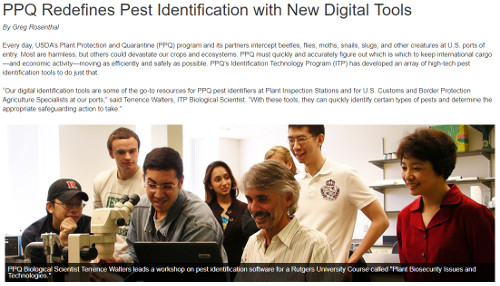Lucid August 2017 Newsletter
Software Updates
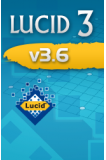 Lucid v3.6 Updated
Lucid v3.6 Updated
A new Lucid v3.6 update is now available. It adds extra features and corrects several minor bugs. Changes include:
JavaScript (browser) player – new features added
The following features that were included in the Java applet player (that is no longer supported) have recently been added to the replacement JavaScript player.
- Shortcuts – this function, like the “Best” function, provides a quicker route to an identification. When Shortcuts is activated, the Player searches for features that, if answered, will provide an immediate shortcut to an identification.
- Why discarded? – indicates those features responsible for a selected entity being discarded.
- Expanding and collapsing features - This feature has been tweaked to be more in line with the previous Java player.
- Ranked mode - Tip: Ranked mode (sorting entities on a percentage match) has been supported from the initial release of the JavaScript player, however the default export option is the discarded/remaining mode. You can set the Player to use the ranked (with percentage matched), by setting this in key's options, via the Lucid Builders export dialog.
Lucid Builder v3.6
- Saving - changes to the save process have been made to help prevent data loss if an unexpected error occurs. For example, disconnection of a network or USB drive. Or powerloss during the save process or a software bug.
- Bug fixes & other changes – numerous minor bug fixes and enhancements have been completed. More detailed messages and improved dialogs for critical errors, if the unexpected occurs.
Click here to download the latest update
Canberra Lucid workshop

A Lucid workshop is being held in Canberra, Australia on the 30th and 31st of October this year. If you are interested in attending you can book your place at: https://shop.lucidcentral.org/index.php?route=product/product&path=62&product_id=74
The workshop will cover the latest Lucid Builder and Player as well as how to speed up your key development with the use of Fact Sheet Fusion and sharing data between them.
For more information on the workshop please see: https://www.lucidcentral.org/Portals/1/Workshop/2017/Lucid_Canberra_Workshop.pdf
 Fact Sheet Fusion News
Fact Sheet Fusion News
A new update to Fact Sheet Fusion (v2.0.5.118) is now available (free to existing v2 licence holders).
This latest update adds a number of new features including:
A new Projects Batch Export. This useful new feature allows multiple selected projects to be exported without opening each individually and performing the export.
The Content Importer (HTML & MS Word) has been further enhanced. It now has an extended save function which saves files associated for import (Html/Word) that have been mapped against Entities. A save shortcut key has also been added (Ctrl + s). A small bug within the Content Importer has also been corrected where a rule wasn’t updated when previewing a rule, if focus hadn’t been moved.
Bug fixes include:
- An uncaught null media caption exception.
- Corrected the remaining export calculations when entities were marked as excluded from the export process.
- The entities and topics import dialog now trims any tab characters from import items that may be present.
Help has been updated to reflect the new features and changes. The update can be downloaded via the Help..Update feature within Fact Sheet Fusion. Or if your network security blocks update notifications can be directly downloaded via www.lucidcentral.org
To purchase Fact Sheet Fusion click here.
New and Updated Keys
Weed identification keys (DVD version) updated to latest Lucid technology
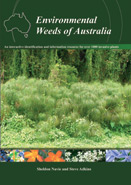
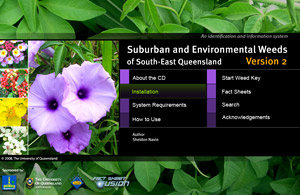
Environmental Weeds of Australia (EWA) and Suburban and Environmental Weeds of South East Queensland (SEW) have now both been upgraded to use the latest Lucid JavaScript based technology. The Java Runtime Environment (JRE) is no longer required to run these keys.
Note: These updates only apply to users who have the DVD editions of these two keys.
For more information and to download the updates click here.
Snakes of Western and Central Africa (Authors: Kate Jackson and Eric Hsu)

Through the use of 39 different characters, this key will return matching identifications among 62 genera of snakes from Central and Western Africa. The countries included in the region are Angola, Benin, Burkina Faso, Burundi, Cameroon, Central African Republic (CAR), Chad, Congo, the Democratic Republic of the Congo (DRC), Equatorial Guinea, Gabon, the Gambia, Ghana, Guinea, Guinea-Bissau, Ivory Coast, Liberia, Mali, Mauritania, Niger, Nigeria, Rwanda, Sao Tome and Principe, Senegal, Sierra Leone, and Togo.
Note: No add-ons or Java required to use this key. Click here to start this key.
Bamboo pests of China Lucid mobile app released. (Author: Dr Xiaobin, Zhang Agricultural university)
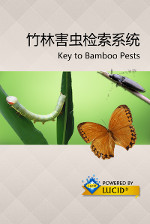
This key covers 48 species of common insects that affect bamboo crops. This key is available in Mandarin and shows the multilingual capabilities of Lucid and the Lucid Mobile platform.
Terrestrial invasive plants (3 languages) (Authors: H. Duistermaat, E. Boer, J. van Valkenburg, Hortus Botanicus Leiden.)
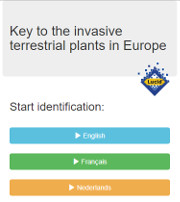
This key helps to identify the major invasive terrestrial plants in NW Europe. Invasive are those species that pose a threat to the biodiversity of the ecoregion. Species included are both those that already are known to be invasive in this region, as well as species known to be invasive elsewhere in comparable climatic regions. Moreover, look-alikes are included to distinguish closely related taxa. A total of 140 species is included. All features are illustrated with botanical drawings so that no knowledge of botanical terms is needed, basic knowledge of plant morphology, however, is helpful. The keys link to complete species descriptions on the Q-bank – Plants website. All species are well illustrated by photographs showing distinguishing characteristics or invaded sites. The key is regularly updated with new species and new photographs. Species that are imported in Europe as weeds in potplants are treated in a separate key. This key is also available in French and Dutch. Click here for more information.
SPIKEY: An interactive key to Triodia spinifex grasses of the Pilbara, Western Australia. Lucid mobile app released (Authors: Dr Matthew Barrett, Dr Benjamin Anderson, Dr Kevin Thiele)
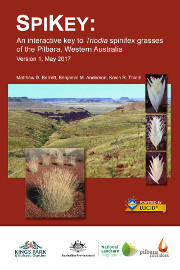
This interactive identification tool covers all of the hummock grasses (the genus Triodia) colloquially known as ‘spinifex’ that occur in the Pilbara bioregion and adjacent areas of Western Australia. This key covers a total of 28 species and one hybrid, about one-quarter of the species in the genus Triodia, using 28 features. This is an important update; about half of the species treated are recently described, and are not covered by earlier synopses of Triodia. Triodia are the dominant plants and a major restoration target in arid zone hummock grasslands, an ecosystem covering 18% of Australia, and correct identification is critical to successful restoration and rehabilitation. This app is intended to be used by land managers, rehabilitation practitioners, botanical consultants, seed collectors, identification botanists and anyone curious about Triodia.
Plants and Fungi of South Western NSW Lucid Mobile app has been updated (Authors: Betty and Don Wood)
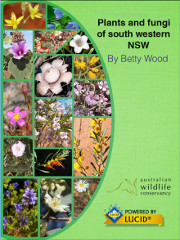
This key is designed for anyone who has an interest in finding out about the plants and fungi of South Western New South Wales. It now includes 1,100 species, accompanied by over 3,000 images.
Spotlight on Lucid users – Identification Technology Program - Invasive Bees
![By USGS Bee Inventory and Monitoring Lab from Beltsville, Maryland, USA [Public domain], via Wikimedia Commons By USGS Bee Inventory and Monitoring Lab from Beltsville, Maryland, USA [Public domain], via Wikimedia Commons](https://www.lucidcentral.org/mail/2017/august/images/Anthidium_manicatum.jpg)
Introduction
As part of the United States Department of Agriculture (USDA) Animal and Plant Health Inspection Service (APHIS) Plant Protection and Quarantine (PPQ) division, the role of the Identification Technology Program is to develop digital products to support efficient and accurate identification of plant pests. The process used by the ITP team to achieve this aim is shown below.
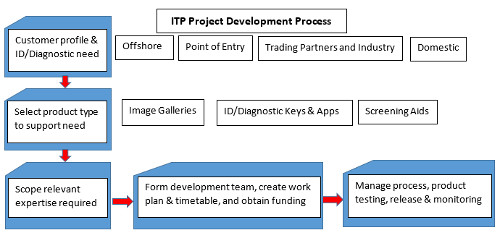
Developing an invasive bee key
A previous Lucid newsletter (November 2015) described some Lucid products developed by the ITP, this spotlight article focuses on the development of identification tools to invasive bees, and some of the activities involved in the early stages of the project.
With many studies suggesting that bee populations and species are declining, with a potentially devastating impact on American agriculture, President Obama in 2014 established a Federal strategy to better understand the factors that affect the health of honey bees and other pollinators.
Invasive bees are known to compete with and displace native pollinators but can also bring along harmful exotic pathogens and parasites. In this context, a project - Invasive Bee ID – has the objective of developing accessible, user-friendly resources, tailored to support off-shore, port-of-entry, state, and local personnel responsible for screening and identifying native, introduced, and potentially invasive bee species in the USA.
The Invasive Bee ID team includes several entomologists from Utah State University (USU), a USDA Agricultural Research Service entomologist, who also curates the National Pollinating Insects Collection at USU, and a USDA APHIS port identifier who specializes in bees. ITP has worked with the USU team to map out a three-year work plan that includes multiple keys to genera and species of agriculturally important native and invasive bees, fact sheets and images, and additional supporting web content.
To kick off the project, ITP provided the team with training in creating Lucid keys and using ITP’s tool building methods and support software. Through the entire project, ITP will help support the Invasive Bee ID and the release of ID tools in three stages; new keys and fact sheets will be added each year.
More information on the ITP can be found in an article in the online Newsletter - "Plant Protection Today" https://www.aphis.usda.gov/aphis/ourfocus/planthealth/ppq-program-overview/plant-protection-today/articles/id-tools
